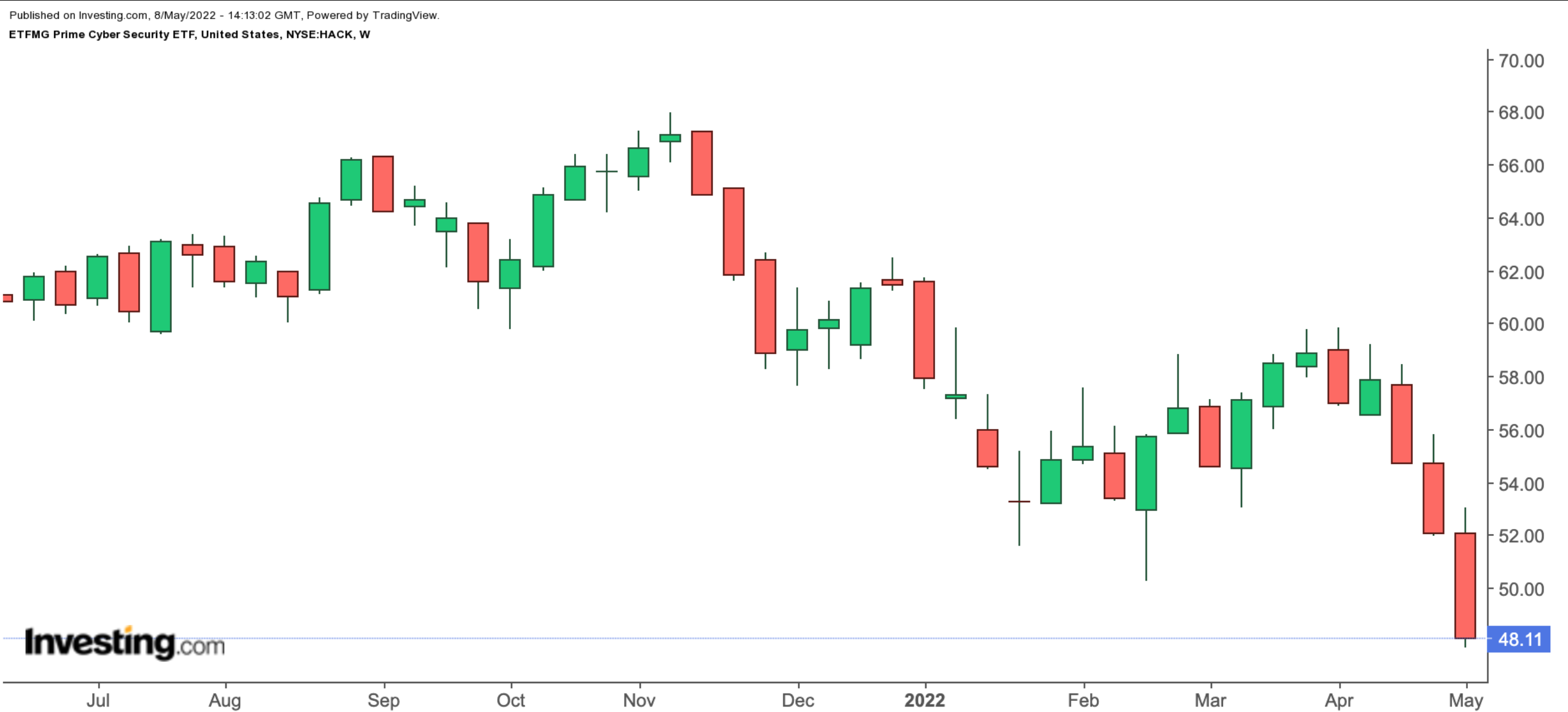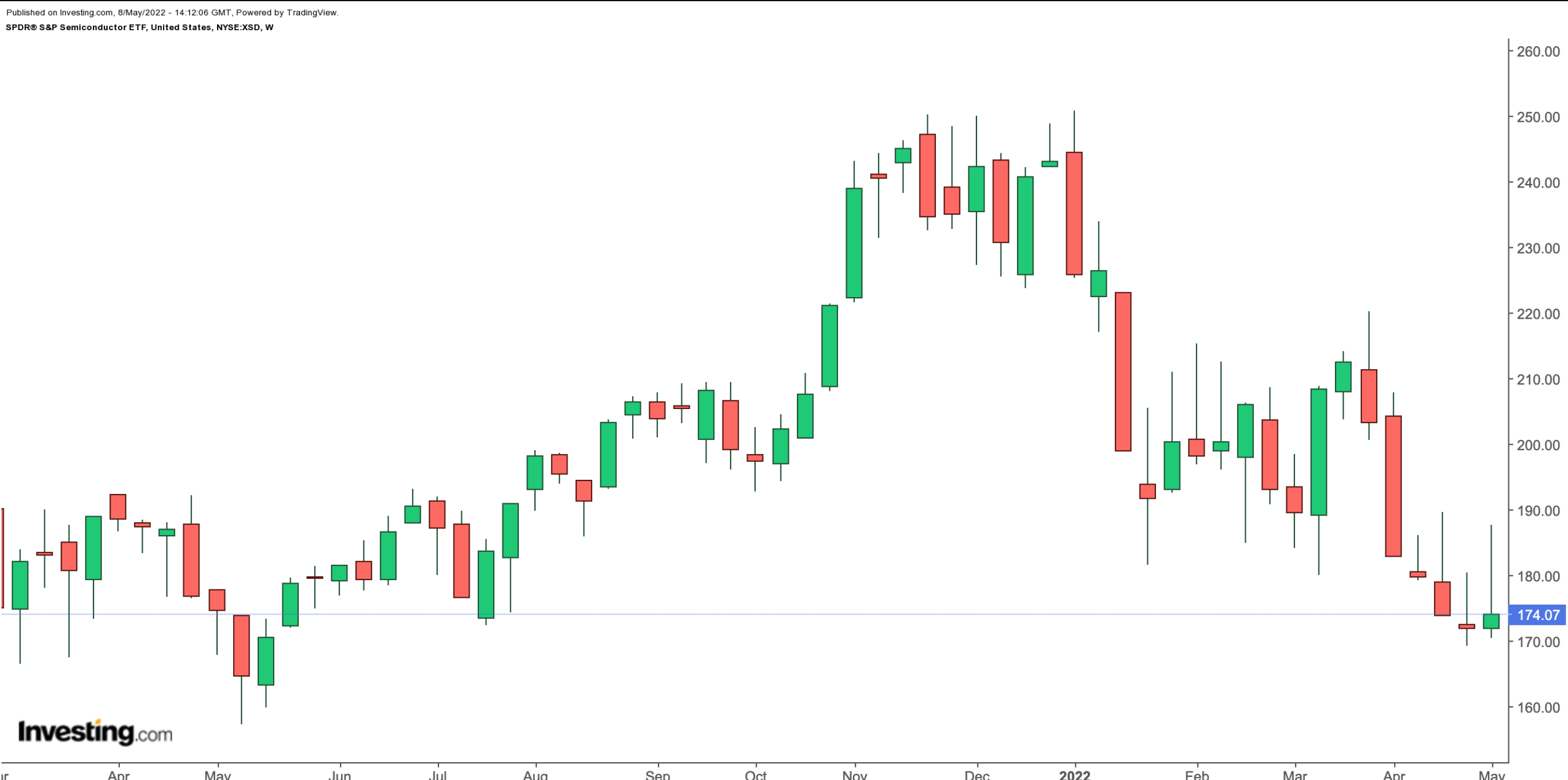Last Wednesday, the US Federal Reserve increased interest rates by half a percent. The central bank is also shrinking its balance sheet. These efforts are part of a move by the Fed to decrease spiking inflation which is no easy feat without pushing the economy into recession.
After the announcement, volatility increased on Wall Street. We saw significant weekly losses amid intensifying worries about persistent inflation and expectations of future rate hikes by the Fed.
The negative sentiment particularly hit high-growth technology stocks as well as unprofitable names that may need to borrow heavily to grow operations. As a result, on May 6, the NASDAQ Composite posted its worst single-day performance since June 11, 2020.
It was also the lowest closing for the tech-heavy index since November 2020. So far in 2022, many tech names have in fact collapsed to new 52-week lows.
Meanwhile, geopolitical headwinds in the form of the Russian invasion of Ukraine and COVID-19 lockdowns in China continue to add to the rollercoaster ride. Yet, seasoned investors also realize declines of such magnitude typically mean many excellent stocks are now on sale.
Therefore, today’s article introduces two exchange-traded funds (ETFs) that could appeal to readers seeking broad exposure in the battered tech industry after the Fed decision.
1. ETFMG Prime Cyber Security ETF
- Current Price: $48.11
- 52-week range: $47.74 - $67.92
- Dividend yield: 0.38%
- Expense ratio: 0.60% per year
Increased digitalization exposes governments, businesses and individuals to cyber risks. Meanwhile, tech industry experts warn about potential Russian cyberattacks in retaliation for Western sanctions. Thus, cybersecurity stocks have been in the limelight since early 2022.
Our first fund, the ETFMG Prime Cyber Security ETF (NYSE:HACK), offers access to names that provide cyber defense solutions, including hardware, software, and services. Recent metrics suggest that between 2022 and 2027, the global cybersecurity market could grow over 14% compound annual growth rate (CAGR). Therefore, the future for companies in the fund could look bright.

HACK, which started trading in November 2014, tracks the Prime Cyber Defense Index. With a portfolio of 68 stocks, the ETF gives a diversified exposure across market capitalizations, geography, and business focus.
System software names have the largest portion in the fund, with roughly a 45% slice. Next are internet services and infrastructure (18%) and communications equipment (11%).
The top 10 holdings comprise almost half of $1.8 billion in net assets. Among those names are the UK-based BAE Systems (OTC:BAESY); CrowdStrike (NASDAQ:CRWD); Palo Alto Networks (NASDAQ:PANW); Splunk (NASDAQ:SPLK); and Cisco Systems (NASDAQ:CSCO).
HACK hit a multi-year low on May 6. It is down more than 21.5% year-to-date (YTD) and 13% over the past 12 months. Investors with a focus on long-term returns instead of short-term swings could consider current levels as a good entry point.
2. SPDR S&P Semiconductors ETF
- Current Price: $174.07
- 52-week range: $157.26 - $250.82
- Dividend yield: 0.19%
- Expense ratio: 0.35% per year
Semiconductor shares have mostly lost around a fourth of their value so far in 2022. For instance, the Philadelphia Semiconductor Index has declined 24.4%.
Yet, growth prospects for the semiconductor industry are strong, in part thanks to the increasing adoption of cloud computing and artificial intelligence (AI). Moreover, the burgeoning Internet of Things (IoT) and metaverse environment could provide further tailwinds for chip revenues. Global semiconductor sales in Q1 2022 have grown by 23% year-over-year (YOY), according to the Semiconductor Industry Association (SIA).
Therefore, our second fund is the SPDR S&P Semiconductors ETF (NYSE:XSD), which invests in names that are at the forefront of the industry. The ETF has 40 holdings ranging from large, well-known businesses to smaller growth ones.

XSD, which follows the S&P Semiconductor Select Industry Index, was first launched in January 2006.
The top 10 stocks comprise around 28% of $1.1 billion in net assets. Semiconductor companies Monolithic Power Systems (NASDAQ:MPWR) and Analog Devices (NASDAQ:ADI); the world’s largest thin-film solar module manufacturer First Solar (NASDAQ:FSLR); and two other heavyweights Silicon Laboratories (NASDAQ:SLAB) and Broadcom (NASDAQ:AVGO) lead the names on the roster.
The ETF is down roughly 28.5% since January, but has returned 1.5% over the past 12 months. Meanwhile, trailing P/E and P/B ratios are at 17.19x and 3.77x. Investors looking to benefit from the long-term growth in the semiconductor sector through a diversified fund could consider researching XSD further.
